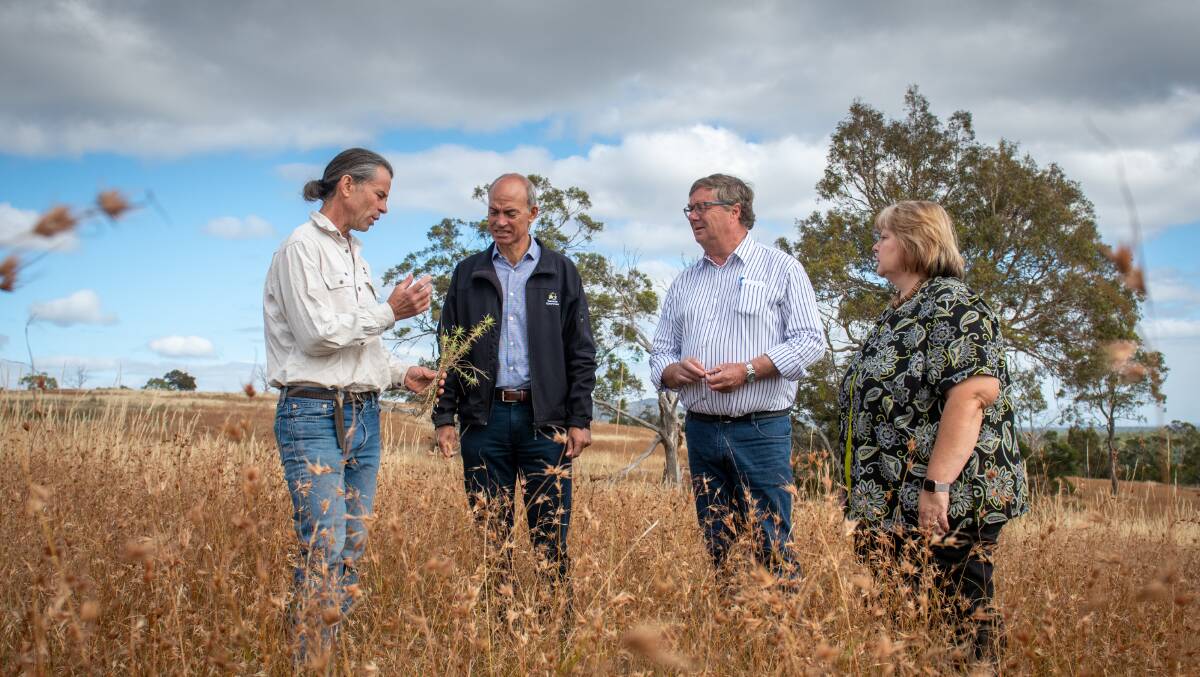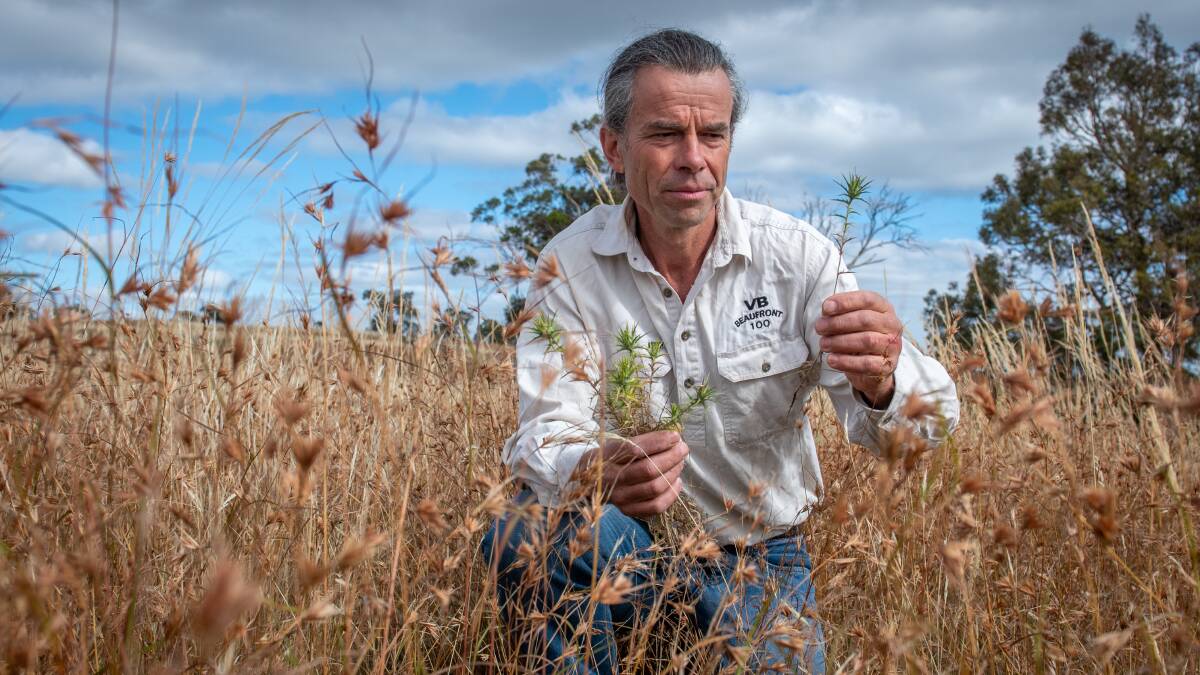
A rocky hilltop on farmer Julian von Bibra's property is a haven for native flora and fauna, but it faces a problem he can't solve alone.
Subscribe now for unlimited access.
$0/
(min cost $0)
or signup to continue reading
The paddock, purchased as part of a land package used for farming, has high conservation values, but is slowly being choked with gorse, saffron thistle and cotton thistle.
Mr von Bibra was faced with the difficult challenge of figuring out how to manage the invasive weed population on the land, but soon found it financially difficult to do in an environmentally friendly way.
IN OTHER NEWS:
"Because we want to do this in a sensitive way, to support the environment that already exists, we found that it would be a lot more costly than traditional spray methods," he said.
Mr von Bibra was announced recently as one of the successful applications for the Tasmanian Government's Weed Action Fund.
The fund, which is delivered by NRM North, is funded by the Tasmanian Government, and the second round of grants were announced last week.
Mr von Bibra said he'd received $10,000 to assist with his efforts to manage the gorse population and other weeds in that paddock.

The funds have already been released and work on the field has already begun.
While the paddock won't be used for traditional agricultural uses, it has high conservation values and is a haven for native plants and supports an ecosystem that's important to Mr von Bibra.
"It's a rich biodiversity area with endemic plants that don't exist elsewhere," he said.
"So for us it's about being good stewards of the environment, if we are going to be using it for agriculture."
Mr von Bibra said in the last 700 years agriculture had been very good at converting environment to farmland, so much so that Tasmania had so little untouched land left.
So he felt, as a farmer, it was important to support what he could on the properties he owned.
Primary Industries Minister Guy Barnett was at the launch, and said the Weed Action Fund was an "important initiative."
"This important initiative encourages the concept of shared responsibility for weed management and provides an opportunity for landowners to co-invest in removing the threat of serious weeds," he said.
A total of $200,000 has been granted to 26 successful applications for the second round of the program. It's funded to the tune of $5 million by the state government.
The second round received a total of 63 applications.
"This is a great example of how the Weeds Action Fund is getting strategic outcomes and many of the projects also represent broad partnerships of landholders working to collectively manage a priority weed issue," Mr Barnett said.

Weeds Action Fund coordinator Raelene Mibus said that applications were received from a diverse range of candidates, such as local governments, businesses, private landholders, community groups, and catchment groups.
Many of the projects also represent broad partnerships of landholders working to collectively manage priority weeds.
"Weeds know no borders. Many of the successful projects demonstrate how working together is necessary to control weeds that span property boundaries and land tenures," Dr Mibus said.
"We are really pleased to see examples of neighbouring local governments working together. One project led by Central Coast Council brings the five north west councils together to work collaboratively on the management of spanish heath across municipalities. It's a great example of how the Weeds Action Fund is getting strategic outcomes."



